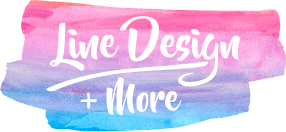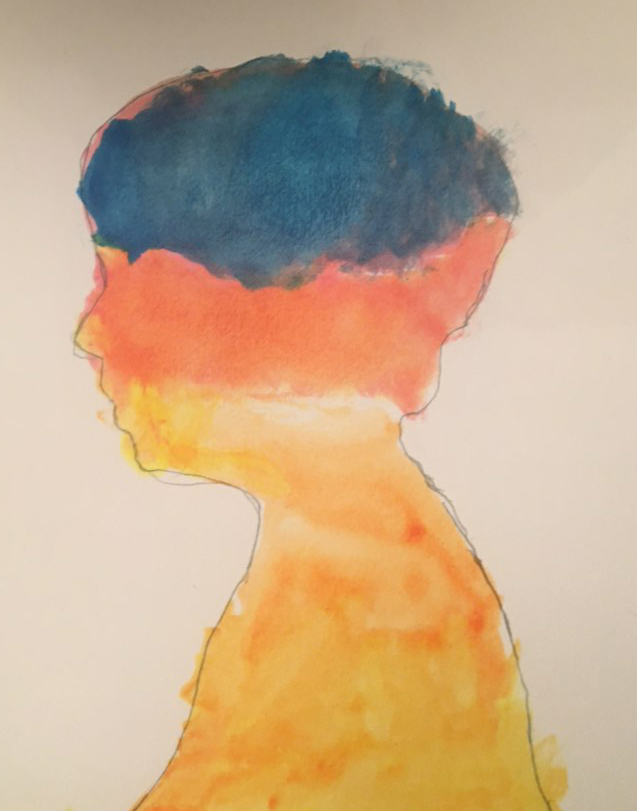This is project was designed for Girl Scout Brownie Badge Painting – Part Two, but really its designed for anyone to participate in. Through this tutorial we start out with understanding What a portrait is? How it how it has changed over the history.
WHAT IS A PORTRAIT?
In short a portrait is a representation of a particular person at the particular point of time the subject is being painted. In a way the portrait tells us a story of a person or persons in the painting, or photograph. The focuses on the details that make this person in the portrait unique, or why they are important in the painting.
Portraiture is a very old art form seen as far back as Ancient Egypt & Greece. Centuries of years ago artist did not have the luxury to paint what ever subject they wanted. Most of the artwork we back then was commissioned – paid for. That is why we see so many paintings depicting only people of prominence or religious figures.
The artist painting the portrait will also focus on facial features, a facial expressions, as well as something as simplye as the direction the body is positioned all has meaning. The clothing that the subject is wearing or the background the artist chose to paint will all give you visual cues to who is the person behind the paint.
It was towards the 19th Century did we start to see in a change in who was depicted or painted in portraiture. The portrait paintings were based on interest of the artist and the statement they wanted to make. As Whistler was quoted in saying “Making art for the sake of art”
SILHOUETTE PORTRAIT
In this tutorial we are going to do a silhouette portrait, otherwise known as a side profile portrait. We are going to fill it in very similar to a shadow portrait that was very popular in the 1800’s as you may see depicted in many of Jane Austen’s writings. Back then a subject would sit next to a wall with a light sorce creating a shadow on the wall were the paper or canvas would be. For this project we are doing a little bit of an updated version for many reasons. One of those reasons it is very difficult to get a 5 year old child to sit completely still for 5 minutes to try to trace their profile.
In this project we are going to use any digital camera available, even a cell phone will work.
SUPPLY LIST
- Water Color Paints
- Water Color Paper
- Water Color Brushes
- Pencil with eraser
- Marker
- Scissors
- Painters Tape
- Printed Side Profile Pic
- Tray
- 2 Cups of Water (for cleaning brushes)
STEP BY STEP
- If you haven’t already done so lets start with taking that side profile picture with the camera and printing it ready.
- With your pencil first trace out the outline of the person in your profile photo, use the pencil because it is easier to erase. Hair can be hard, deciding which flyways to include and which to ignore. Best rule of thumb is to look at where the majority of the hair is and laying down. Be sure to trace the whole profile, from the head down to end of the page. I
- If your satisfied with your outline retrace it with the black marker to create a contour line- a thick line like seen in coloring books.
- Once you have fully traced the profile and have a thick defined line for you to follow, cut that image out.
- Use your cut out to trace photo out secure it to the water color paper with a little piece of Painters Tape. I find simply a 1 inch length is enough to secure the top. By leaving the bottom unsecured you can flip it up to check your work for gaps before you remove the tape at the top.
- Your ready to trace once the template is secured to the water color paper. Don’t press to hard to prevent imprinting on the paper your pencil mark in case you need to erase.
- Inspect your work to be sure you have completely traced your template. By leaving the bottom unsecured you can flip it up to check your work for gaps before you remove the tape at the top.
- If you are sure of your trace lines remove the taped portion and here you can estimate the joining of the lines with out tracing since it is such a small portion of the outline.
- Prepare your water colors, choose your colors for the composition. This is entirely up to you. You can go the traditional shadow portrait with one dark color to fill in your outline. How ever if you are feeling creative like my son, you can have graduation of colors. These colors can represent the mood your in or your personality.

